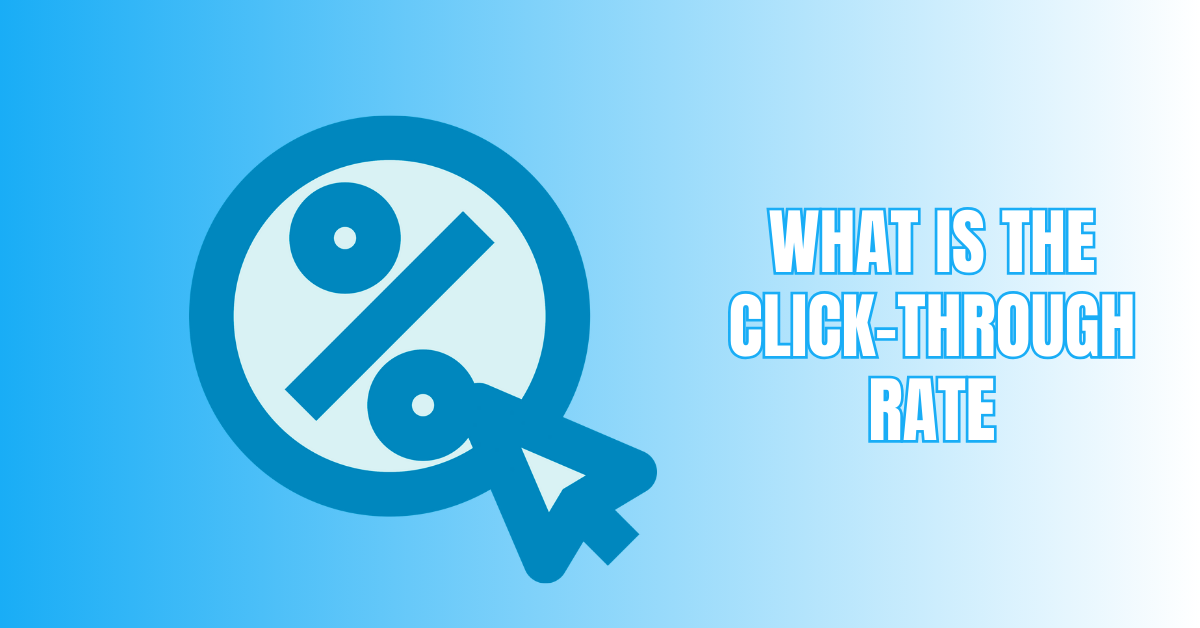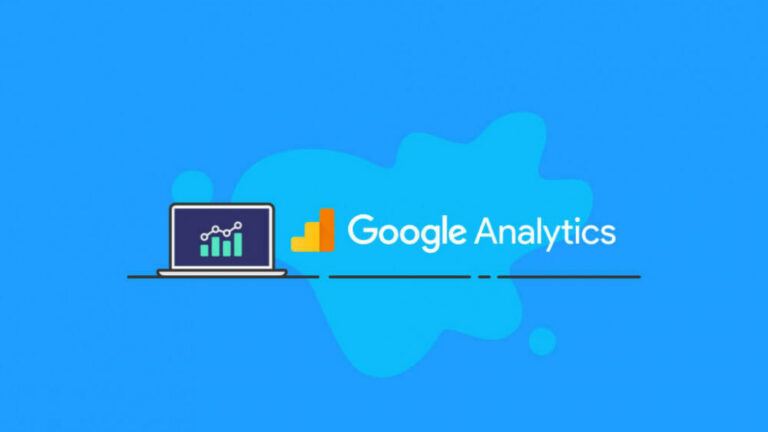What Is The Click-Through Rate
What is the click-through rate (CTR)? This crucial digital marketing indicator establishes the proportion of viewers who click on an advertisement or link after seeing it.
The CTR shows the success of your targeting and content. A high CTR indicates engaging content and effective targeting, while a low CTR suggests room for improvement.
Understanding CTR is essential for optimizing campaigns, increasing traffic, and boosting conversions. This article will explore strategies to analyze and improve your CTR for better results.
What Is The Click-Through Rate
One crucial performance indicator in digital marketing is the click-through rate (CTR). It shows the proportion of users who click on a call-to-action (CTA), link, or advertisement relative to the total number of viewers.
The CTR is computed by dividing the total impressions by the number of clicks and multiplying the result by 100. For instance, if an ad receives 10 clicks out of 1,000 views, the CTR is 1%. CTR is a critical indicator of how well your content, ad, or email campaign resonates with your audience.
A high CTR typically signifies that the message is compelling and the targeting is effective. Conversely, a low CTR suggests refining messaging, design, or audience segmentation.
Factors such as engaging headlines, clear CTAs, and relevance to the audience can significantly influence CTR. It varies by industry and platform, and benchmarks help set realistic goals.
Monitoring and managing CTR can help businesses increase website traffic, boost conversion rates, and improve their marketing campaigns' return on investment (ROI). Maximizing the effectiveness of digital campaigns requires an understanding of and ability to use CTR.
Why The Click-Through Rate (CTR) Is Important
Click-through rate (CTR) measures how well your marketing captures attention and inspires action, revealing engagement effectiveness. Here’s why CTR is critical to your success:

1. It Measures Engagement And Relevance
CTR directly reflects how appealing and relevant your content is to your audience. What is the click-through rate? The percentage of users who click on your link, email, or advertisement is a number that shows how well your content connects and engages with your audience.
Conversely, a low CTR can highlight disconnects in messaging, targeting, or design, offering valuable feedback for improvement.
2. Improves Ad Quality Scores
For advertisers, particularly on platforms like Google Ads, CTR is key in determining their Quality Score—a higher quality score results in lower cost-per-click (CPC) rates and better ad placements. A good CTR saves money and enhances your campaign's visibility, maximizing your budget’s efficiency.
3. Drives Website Traffic And Conversions
A compelling link with a substantial CTR drives more visitors to your website or landing page. This influx of traffic opens doors for lead generation, sales, or other desired actions.
While CTR doesn’t directly measure conversions, it ensures a steady stream of engaged visitors, setting the foundation for them.

4. Provides Actionable Insights
Analyzing CTR helps pinpoint what works and what doesn’t. You gain insights into audience preferences and behaviours by examining the performance of headlines, CTAs, images, or targeting strategies.
This data-driven approach allows you to fine-tune campaigns, improve future efforts, and stay ahead of the competition.
5. Boosts SEO And Organic Reach
A higher CTR can improve your website's ranking in organic search results. Search engines like Google consider CTR a signal of relevance.
Want to Start Making Money Online?
Try My #1 Recommendation Program!
The more users click on your link in search results, the more likely the algorithm is to prioritize your content, increasing visibility and traffic over time.
6. Enhances ROI
Ultimately, CTR is tied to your return on investment (ROI). High-performing campaigns with good CTRs maximize your marketing spend by delivering better results at a lower cost. Every click is a potential customer, and optimizing CTR ensures fewer marketing dollars go to waste.
7. Helps Identify Effective Campaigns
CTR is a quick and effective way to measure which campaigns are hitting the mark and which aren’t. CTR is an immediate effectiveness indicator when you launch multiple ads or email campaigns.
Campaigns with high CTRs can be expanded and optimized further, while those with low CTRs offer valuable lessons on what might need tweaking—the creative, offer, or timing.
8. Guides A/B Testing
CTR plays a crucial role in A/B testing, where you compare different versions of ads, emails, or landing pages to see which one performs better.
By tracking CTR for each variation, you can identify which headlines, images, or calls to action resonate with your audience, allowing for data-driven decisions that can enhance future content or campaigns.
9. Enhances User Experience
Click-through rate (CTR) measures how effectively your audience engages with your ad or link. A low CTR suggests the need to enhance user experience.
Optimize landing pages by ensuring fast loading times, simple navigation, and alignment with ad promises. These improvements boost engagement, leading to higher CTRs and more conversions.

10. Supports Retargeting Efforts
CTR is also valuable in retargeting campaigns. By identifying which audience segments are clicking but not converting, you can adjust your strategy to engage them further.
A high CTR in a retargeting campaign often indicates that your initial outreach was relevant, and a little nudge can push them toward conversion.
What Is A Good Click-Through Rate?
A “good” click-through rate (CTR) varies depending on the industry, platform, and campaign type. For paid search ads, the average CTR is around 1-2%, with anything above 4% often considered excellent. Due to their more passive nature, display ads typically have lower averages, hovering around 0.5% to 1%.
Generally speaking, email marketing has higher CTRs, averaging between 2% and 5%, depending on audience relevance and customization.
Want to Find Out How To Start Your Home-Based Business?
Try My #1 Recommendation Platform!
The CTR of advertisements on social media sites like Facebook and Instagram is usually between 0.9 and 1.6%, although it can be higher with precise targeting and engaging content.
A good CTR isn’t just about hitting a number—it’s about meeting or exceeding the benchmarks for your platform and goals.
High CTRs indicate your audience finds your content compelling and relevant, while low CTRs signal areas for improvement, such as better targeting, engaging visuals, or stronger calls-to-action.
Instead of obsessing over universal standards, improve your CTR through testing and optimization. A consistent upward trend in your CTR shows your efforts are paying off, helping you achieve more traffic, conversions, and return on investment (ROI).
How To Improve Click-Through Rates
Improving click-through rates (CTR) is key to driving engagement and achieving better marketing results. Here are actionable strategies to boost your CTR:
1. Craft Engaging Headlines
Headlines are the first thing users see. Make them clear, attention-grabbing, and concise. Using numbers, power words, or intriguing questions can spark curiosity and increase the likelihood of a click. Ensure they accurately reflect the content.

2. Optimize Call-To-Action (CTA)
A strong CTA is essential for driving action. Use precise, action-oriented phrases like “Get Started,” “Shop Now,” or “Learn More.”
Make the CTA button stand out visually, and place it strategically for easy access, encouraging immediate engagement.
3. Personalize Your Content
Click-through rate (CTR) reflects how personalized, targeted messaging engages audiences. Personalization makes content more relevant, increasing engagement.
Dynamic content creates unique user experiences, boosting CTR and satisfaction through tailored, meaningful interactions.

4. Use High-Quality Visuals
Eye-catching visuals grab attention and enhance content appeal. Use high-quality images, videos, or infographics relevant to your message. Visuals help convey your message quickly and clearly, increasing user interest and likelihood of clicking.
5. Test And Refine
A/B testing allows you to compare headlines, calls to action, or content iterations. You may ascertain what your audience finds appealing through performance analysis and make data-driven decisions to raise CTR progressively. Testing must be done regularly.
6. Improve Targeting
What is the click-through rate? It is a metric that measures how accurately targeted content engages the right audience, leading to higher engagement and conversions.
Are You Tired Of Scams?
Want to Start Making Money Online?
Use demographic, interest-based, or behavioural targeting to connect with people most likely to engage. Relevant content for the right people naturally leads to higher CTR and conversions.
7. Highlight Unique Value
Show your audience why they should care. Focus on benefits or exclusive offers that set you apart from competitors. Make it clear how your product or service solves a problem or improves their situation, encouraging clicks.
8. Leverage Keywords
Use relevant, high-intent keywords to match user search queries in your content and ads. Keyword optimization improves visibility and relevance, increasing your chances of showing up in the right searches and attracting users who are more likely to click.

9. Ensure Mobile-Friendliness
Mobile optimization is crucial since mobile devices provide the majority of web traffic. Ensure fast loading speeds, responsive designs, and easy navigation. A smooth mobile experience increases engagement and encourages more clicks from users.
10. Use Social Proof
Including reviews, testimonials, or trust badges builds credibility and reassurance. Social proof boosts trust and entices potential buyers to click by demonstrating that others have had satisfying experiences. People often follow the crowd when making decisions.
11. Create Urgency
Incorporating urgency through time-sensitive offers or phrases like “Limited Time Only” can push users to take immediate action.
Creating a sense of scarcity makes users feel they might miss out, encouraging faster decision-making and more clicks.
12. Optimize Email Previews
What is the click-through rate? It is a metric that shows how effectively compelling subject lines and preview text drive email engagement and encourage readers to click.
Write compelling subject lines and ensure the preview text provides additional context to entice readers to open and click. Make it personal and intriguing.
13. Segment Your Audience
Segmenting your audience based on behaviour, location, or interests allows you to send more tailored, relevant messages. Users who see content that directly speaks to their needs are likelier to click, resulting in higher CTR.
14. Keep It Simple
Simplicity in your design and messaging makes it easier for users to understand your value proposition. A clean, clutter-free layout with minimal distractions helps direct attention to your CTA, increasing the likelihood of a click.
15. Use Engaging Copy
The copy in your ads or emails should be compelling, concise, and benefit-focused. Highlight how your product or service addresses the user’s needs or pain points. Engaging copy makes users feel the need to take action right away.
16. Create Interactive Content
Interactive content like quizzes, polls, or surveys can boost user engagement. Encouraging users to participate actively increases their chances of clicking through for results, personalized recommendations, or more content.
17. Leverage Retargeting
Retargeting lets you connect with people who have already interacted with your brand. By showing them tailored ads based on previous behaviours, you can increase familiarity and trust, leading to higher CTR as users are likelier to click again.
18. Offer Incentives
Users may click if you provide incentives like discounts, free trials, or special access. When people see a real incentive, they are more likely to interact, which makes this a potent tactic for increasing CTR.
19. Optimize Page Load Speed
A fast-loading page improves user experience, reducing bounce rates and boosting CTR. Users are less likely to click away if they can access content quickly, so ensure your pages are optimized for speed across devices.
20. Utilize Urgent Language
What is the click-through rate? It is a metric that reflects how effectively urgent language, such as “Act Now” or “Hurry,” drives users to click and engage with an offer.
Want To Learn How To Create Your Own Website And Online Business?
Try My #1 Recommendation Training And Hosting Platform!
This language triggers a sense of FOMO (fear of missing out), prompting users to act on an offer immediately and improving CTR.
21. Create Compelling Offers
Promotions, limited-time sales, or exclusive offers can drive clicks. Users are more likely to engage if they feel they're getting something special: a discount, early access, or a bonus that adds value.
22. Focus On Benefits, Not Features
Rather than simply listing product features, emphasize how the product or service benefits the user. Benefits speak to users’ emotions and needs, prompting them to click to learn how you can improve their lives.
23. Use Eye-Catching Colors
The right colour scheme can draw attention to your content's CTA and key elements. Use contrasting colours that stand out on your page or ad to guide users' eyes to the most important areas, boosting CTR.
24. Build Trust With Transparency
Transparency about terms, pricing, and constraints will increase your audience's trust. Feeling confident and knowledgeable about what they are clicking for increases the likelihood that users will click, which can increase your click-through rate and lower skepticism.

25. Time Your Campaigns
Sending your messages at the right time increases their chances of being clicked. When scheduling emails or ads, consider the time of day, day of the week, and even seasonality to ensure maximum engagement with your audience.
26. Use Social Media To Drive Traffic
Promote your content through engaging social media posts. Share teasers, behind-the-scenes looks, or user-generated content to generate interest and clicks. Social sharing increases visibility, attracting more users to click on your offers.
27. Be Clear About What’s Next
Make it clear what users should expect when they click. Whether learning more, registering, or shopping, users are more likely to click if they understand the next step and feel confident in their decision.
28. Use Dynamic Content
What is the click-through rate? It is a metric that measures how effectively dynamic, personalized content increases user engagement and the likelihood of them clicking through.
Customizing content based on user data makes your message more relevant, boosting the chances that they’ll click through.
29. Provide Clear Navigation
Ensure your layouts are intuitive so your material is easy to explore. A seamless experience, especially on mobile, reduces friction and encourages users to click. Visitors who can quickly find what they’re looking for are more likely to take action.
30. Align Content With User Intent
Make sure your content reflects the search terms of your audience. If someone searches for “best vegan recipes,” your link should lead to a list of mouth-watering, easy-to-follow recipes. Matching intent with content increases CTR.
31. Utilize Video Content
Videos are highly engaging and can boost CTR by showcasing your product or service in action. Short, compelling video content grabs attention and can convey your message more effectively than text, making users more likely to click.
32. Showcase User Testimonials
User testimonials or case studies create social proof and build trust. When potential customers see how others have benefited from your offering, they are likelier to click through to learn more or make a purchase.
33. Appeal To Emotions
What is the click-through rate? It is a metric that shows how emotionally driven messaging can strengthen the connection with your audience and motivate them to click on your content.
Whether it's a sense of urgency, joy, or relief, tapping into emotions helps create a stronger connection with your audience and motivates them to click on your content.
34. Create Shareable Content
Encourage sharing by creating valuable, thought-provoking, or entertaining content users want. Widely shared content can increase visibility and clicks to your page or product.
35. Use Strong Visual Hierarchy
A strong visual hierarchy guides users through your page. Arrange your content so the most essential elements, like CTAs, stand out. Clear contrast, fonts, and spacing help direct attention, making it easier for users to click.
Conclusion
What is the click-through rate (CTR)? It is a vital indicator that assesses the effectiveness of your digital marketing campaigns.
It can help you improve your strategy, reach the proper audience, and increase conversions. By optimizing your CTR, you can improve traffic, reduce costs, and increase conversions.
Monitoring and enhancing CTR is crucial for achieving better ROI and sustained growth in today’s competitive online landscape.
I trust you enjoyed this article about the What Is The Click-Through Rate. Please stay tuned for more articles. Take care!
JeannetteZ
Want to Learn How to Build Your Own Home-Based Online Business And Start Making Money Online From Your Comfortable Couch?
Try Wealthy Affiliate!
Your Opinion Is Important To Me
Do you have thoughts, ideas, or questions? I would love to hear from you. Please leave me your questions, experiences, remarks, and suggestions about What Is The Click-Through Rate in the comments below. You can also email me at Jeannette@WorkFromAnywhereInTheWorld.com.
Disclosure
This post may contain affiliate links. I earn from qualifying purchases as an Amazon Associate and other affiliate programs. Please read my full affiliate disclosure.
You may also enjoy the following articles:
Wealthy Affiliate Coupons For Premium Memberships
Wealthy Affiliate Review – Scam or Legit? The Truth Exposed
An Insider Wealthy Affiliate Review
How To Save Money On Your Online Marketing Campaign
The Benefits Of Google Analytics
Social Media Advertising: Reaching Your Target Audience Fast And Easy







